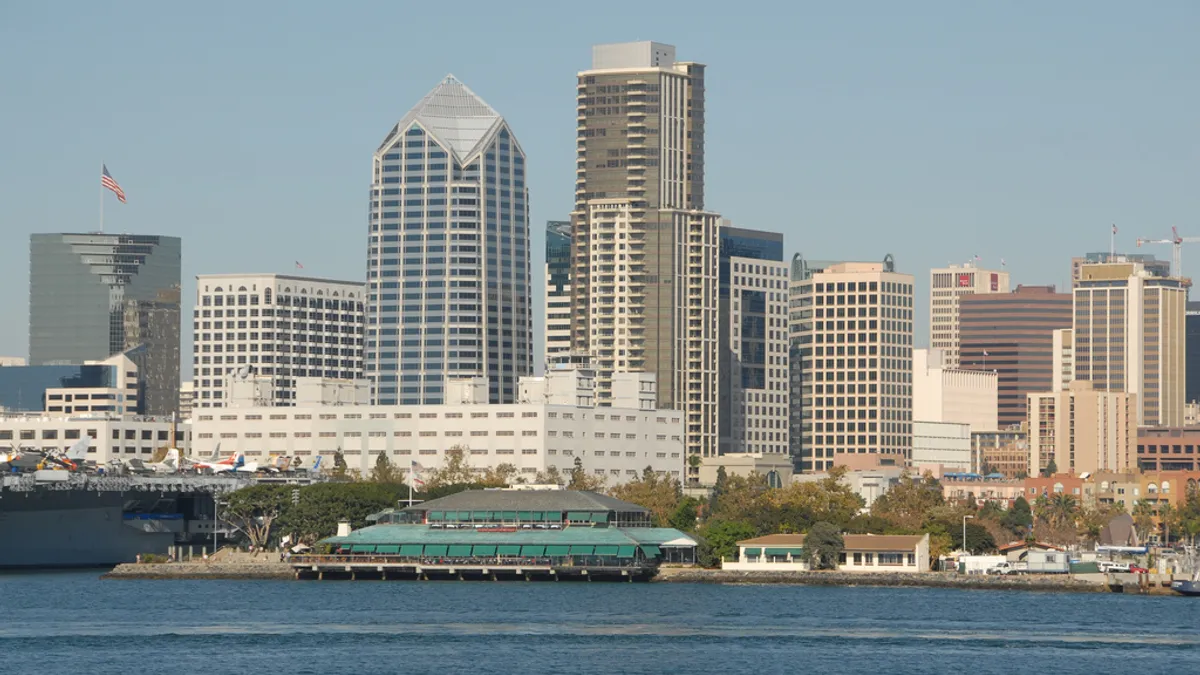Dive Brief:
- The San Diego City Council unanimously approved a plan Tuesday to replace an abandoned 90-year-old theater with a $125 million, 40-story, residential mixed-use tower, according to the Times of San Diego.
- The new Overture high-rise, will feature 282 residential units, an interactive park with exercise and recreational space, a bike share hub, an architectural light show, retail, dining and a reproduction of the California Theater facade.
- City officials and other downtown businesses see the Overture project as a way to revitalize the area, which is served by the San Diego trolley system. The project still must secure additional agency approvals before construction plans can be finalized.
Dive Insight:
While some communities around the country are fighting against high-density developments, San Diego officials are encouraging it, Vince Mudd, principal and COO at Carrier Johnson + CULTURE, told Construction Dive in February.
Developers are going vertical, trying to put the everyday services that people need — such as education, housing, retail and entertainment — all within walking distance or easily reached via mass transportation. City officials are so keen on this type of development that they've doled out variances around the usual sticking points of height and capacity.
However, the issues of density and capacity have been controversial in cities like Los Angeles and Miami.
Some Los Angeles communities have pushed back against the trend toward more high-rise development, which they say puts stress on neighborhood infrastructure and creates too much congestion. Those critics lost at the ballot box last month, however, when voters shot down the Neighborhood Integrity Initiative in March, which would have put a two-year moratorium on the zoning changes needed for much of the high-rise development in question.
And in Miami earlier this year, Mayor Tomás Regalado threatened to scuttle a 7-acre development that would see the demolition of an American Legion hall in favor of a high-density project that would add more than 700 residential units to a modest, historic neighborhood.










